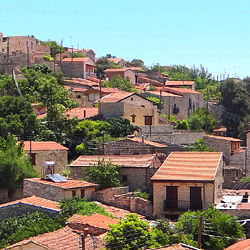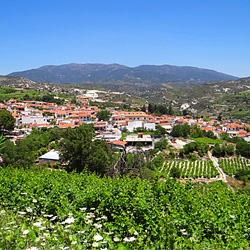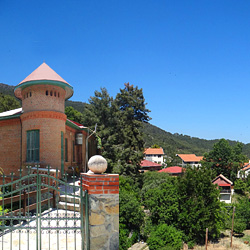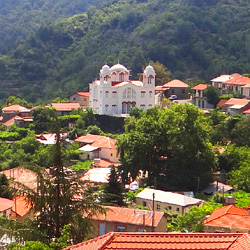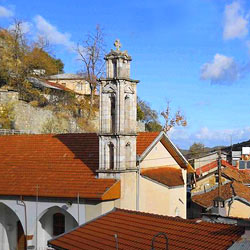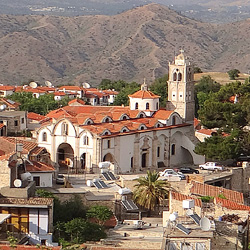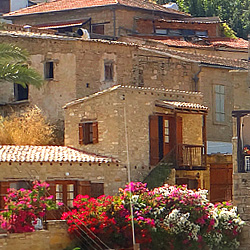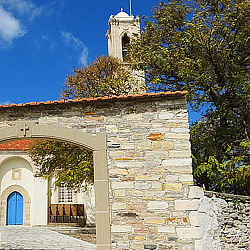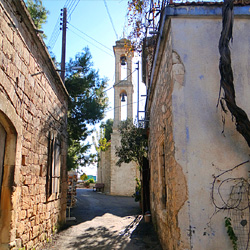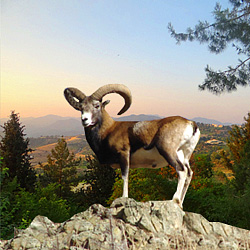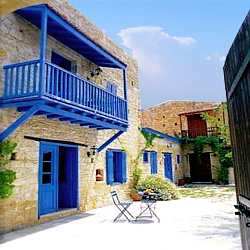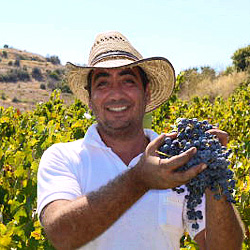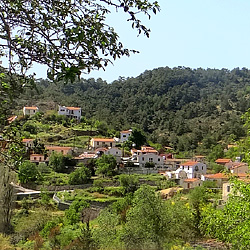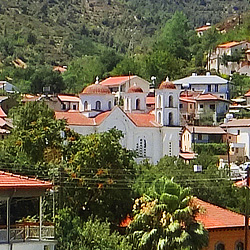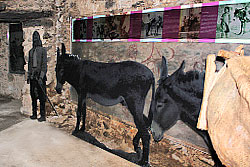
“Linos” Museum
“Linos” Museum is housed in a building on Old Kakopetria Street. It consists of three thematic sections, with the first one being dedicated to wine, the second one to bread and the third one to olive oil.
The building housing Linos has been leased by Mr. Stelios Alkiviades in the year 2000. In fact, the latter has begun a partial gentrification of the building. Some years ago, the Pancyprian Organisation of Architectural Heritage (POAK), in cooperation with the Department of Town Planning and Housing have renovated the building using European funds.
Touring the Museum
Linos maintains two halls on the ground floor and two more on the first floor. In the first hall of the ground floor, where the lobby is also located, visitors can see the dews where the donkeys used to eat. These were placed at a particular place so that the donkeys could eat after the corves filled with grapes were unloaded in the main hall of Linos where the production of wine used to take place.
Moving on from the lobby towards the main hall of Linos, one can see a big tank where the entire grape production used to be placed, as well as a tool – a large lever – which used to be pushed by the donkeys with the help of at least two people. This lever would press and squash the grapes with great force while bouncing up and down. Next, the grape juice would flow in large clay jars. In the same hall there used to be a machine used for processing quality grapes.
In the halls of the first floor there is pictorial material and films which show the history of the Museum, as well as images from the various thematic sections of the Museum, with these being, as it has been mentioned above, the sections of wine, bread and olive oil.
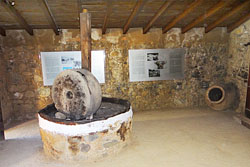
“Eliomylos” Museum
The Museum is housed in the yard of the Church of Soteros, at the old picturesque neighbourhood of Kakopetria.
The old olive mill with the distinctive millstone displayed at the museum today is no longer in operation. The traditional mill consisted of 2 stones. The first one was called “skoutellin” and the second one millstone. The “skoutellin” is actually a round stone that was used as a basin, while the millstone is also a round stone with a hole in the centre where a horizontal post was placed. The millstone, as the residents of Kakopetria describe, would rotate with the help of men pushing the post. More specifically, the two men would stand at each edge of the post moving circularly around the millstone, this way managing to squash the olives that had been previously placed under it.
Immediately afterwards, this mash, as the people of Kakopetria continue to describe, would be placed in the “zembylia” which would then be pressed by the vice causing the olive oil to flow.

